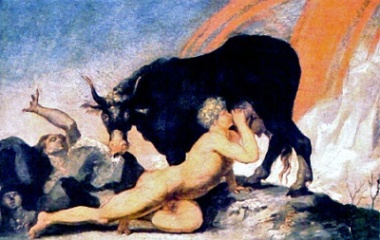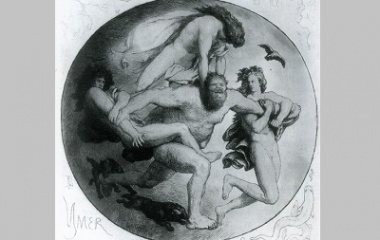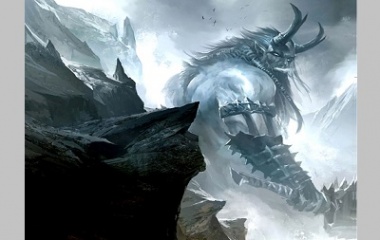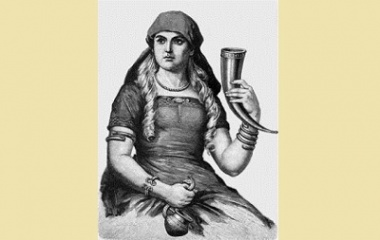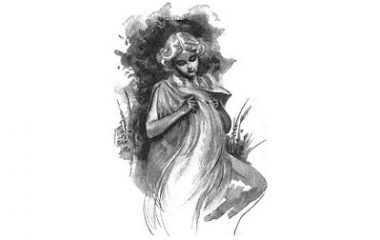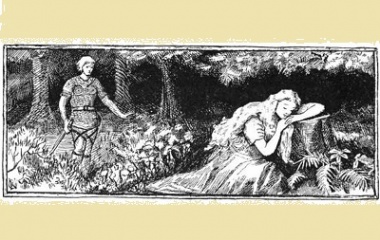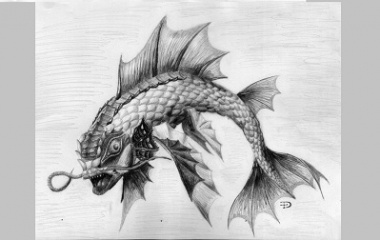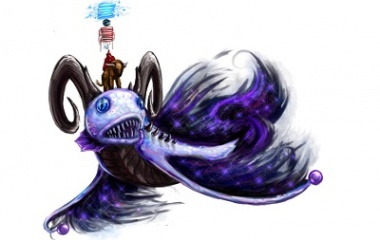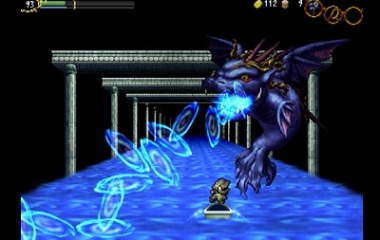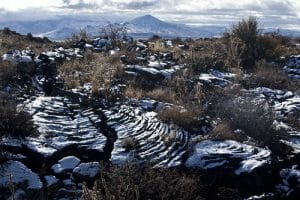Anaerobic Respiration Definition
Aerobic respiration is the process by which cells that do not breathe oxygen liberate energy from fuel to power their life functions.
Molecular oxygen is the most efficient electron acceptor for respiration, due to its nucleus’ high affinity for electrons. However, some organisms have evolved to use other oxidizers, and as such, these perform respiration without oxygen.
These organisms also use an electron transport chain to generate as much ATP as possible from their fuel, but their electron transport chains extract less energy than those of aerobic respiration because their electron acceptors are weaker.
Many bacteria and archaea can only perform anaerobic respiration. Many other organisms can perform either aerobic or anaerobic respiration, depending on whether oxygen is present.
Humans and other animals rely on aerobic respiration to stay alive, but can extend their cells’ lives or performance in the absence of oxygen by using forms of anaerobic respiration.
Function of Anaerobic Respiration
Respiration is the process through which the energy stored in fuel is converted into a form that a cell can use. Typically, energy stored in the molecular bonds of a sugar or fat molecule is used to make ATP, by taking electrons from the fuel molecule and using them to power an electron transport chain.
Respiration is crucial to a cell’s survival because if it cannot liberate energy from fuel to drive its life functions, the cell will die.
This is why air-breathing organisms die so quickly without a constant supply of oxygen: our cells cannot generate enough energy to stay alive without it.
Instead of oxygen, anaerobic cells use substances such as sulfate, nitrate, sulfur, and fumarate to drive their cellular respiration.
Many cells can perform either aerobic or anaerobic respiration, depending on whether oxygen is available.
The image below illustrates a test tube test whereby scientists can determine if an organism is:
- An obligate aerobe – an organism that cannot survive without oxygen
- An obligate anaerobe – an organism that cannot survive in the presence of oxygen
- An aerotolerant organism – an organism that can live in the presence of oxygen, but does not use it to grow
- A facultative aerobe – an organism that can use oxygen to grow, but can also perform anaerobic respiration

Where Does Anaerobic Respiration Occur?
Anaerobic respiration takes place in the cytoplasm of cells. Indeed, most cells that use anaerobic respiration are bacteria or archaea, which don’t have specialized organelles.
What do Anaerobic Respiration and Aerobic Respiration Have in Common?
Both aerobic and anaerobic respiration begin with the splitting of a sugar molecule in a process called “glycolysis.” This process consumes two ATP molecules and creates four ATP, for a net gain of two ATP per sugar molecule that is split.
In both aerobic and anaerobic respiration, the two halves of the sugar molecule are then sent through another series of reactions that use electron transport chains to generate more ATP.
It is these reactions that require an electron acceptor – be it oxygen, sulfate, nitrate, etc. – in order to drive them.
What’s the Difference Between Aerobic Respiration and Anaerobic Respiration?
After glycolysis, both the aerobic and anaerobic cells send the two halves of glucose through a long chain of chemical reactions to generate more ATP and extract electrons for use in their electron transport chain.
However, what these reactions are, and where they happen, varies between aerobic and anaerobic cells.
In aerobic cells, the electron transport chain, and most of the chemical reactions of respiration, occur in the mitochondria. The mitochondria’s system of membranes makes the process much more efficient by concentrating the chemical reactants of respiration together in one small space.
In anaerobic cells, however, respiration typically takes place in the cell’s cytoplasm, since most anaerobic cells do not have specialized organelles. The series of reactions is typically shorter, and uses an electron acceptor such as sulfate, nitrate, sulfur, or fumarate instead of oxygen.
Anaerobic respiration also produces less ATP for each sugar molecule digested than aerobic respiration. In addition, it produces different waste products – including, in some cases, alcohol!
Types of Anaerobic Respiration
The types of anaerobic respiration are as varied as its electron acceptors. Important types of anaerobic respiration include:
- Lactic acid fermentation – In this type of anaerobic respiration, glucose is split into two molecules of lactic acid to produce two ATP.
- Alcoholic fermentation – In this type of anaerobic respiration, glucose is split into ethanol, or ethyl alcohol. This process also produces two ATP per sugar molecule.
- Other types of fermentation – Other types of fermentation are performed by some bacteria and archaea. These include proprionic acid fermentation, butyric acid fermentation, solvent fermentation, mixed acid fermentation, butanediol fermentation, Stickland fermentation, acetogenesis, and methanogenesis.
Anaerobic Respiration Equations
The equations for the two most common types of anaerobic respiration are:
• Lactic acid fermentation:
C6H12O6 (glucose)+ 2 ADP + 2 phosphate → 2 lactic acid + 2 ATP
• Alcoholic fermentation:
C6H12O6 (glucose) + 2 ADP + 2 phosphate → 2 C2H5OH (ethanol) + 2 CO2 + 2 ATP
Examples of Anaerobic Respiration
Sore Muscles and Lactic Acid
During intense exercise, our muscles use oxygen to produce ATP faster than we can supply it.
When this happens, muscle cells can perform glycolysis faster than they can supply oxygen to their electron transport chain.
The result is that lactic acid fermentation occurs within our cells – and after prolonged exercise, the built-up lactic acid can make our muscles sore!
Yeasts and Alcoholic Drinks
Alcoholic drinks such as wine and whiskey are typically produced by bottling yeasts – which perform alcoholic fermentation – with a solution of sugar and other flavoring compounds.
Yeasts can use complex carbohydrates including those found in potatoes, grapes, corn, and many other grains, as sources of sugar.
Putting the yeast and its fuel source in an airtight bottle ensures that there will not be enough oxygen around to interfere with the anaerobic respiration that produces the alcohol!
Alcohol is actually toxic to the yeasts that produce it – when alcohol concentrations become high enough, the yeast will begin to die.
For that reason, it is not possible to brew a wine or a beer that has greater than 30% alcohol content. However, the process of distillation, which separates alcohol from other components of the brew, can be used to concentrate alcohol and produce hard liquors.
Methanogenesis and Dangerous Homebrews
Unfortunately, alcoholic fermentation isn’t the only kind of fermentation that can happen in plant matter. Glucose is fermented into ethyl alcohol – but a different alcohol, called methanol, can be produced from fermentation of a different sugar found in plants.
When cellulose is fermented into methanol, the results can be dangerous. The dangers of “moonshine” – cheap, homebrewed whiskey which often contains high amounts of methanol due to poor brewing and distillation processes – were advertised in the 20th century during prohibition.
Death and nerve damage from methanol poisoning is still an issue in areas where unskilled people try to brew alcohol cheaply. So, if you’re going to become a brewer, make sure you do your homework!
Swiss Cheese and Propionic Acid
Propionic acid fermentation gives Swiss cheese its distinctive flavor. The holes in Swiss cheese are actually made by bubbles of carbon dioxide gas released as a waste product of a bacteria that uses propionic acid fermentation.
After the implementation of stricter sanitation standards in the 20th century, many producers of Swiss cheese were puzzled to find that their cheese was losing its holes – and its flavor!
The culprit was discovered to be a lack of a specific bacteria which produce propionic acid. Throughout the ages, this bacteria had been introduced as a contaminant from the hay the cows ate. But after stricter hygiene standards were introduced, this was not happening anymore!
This bacteria is now added intentionally during production to ensure that Swiss cheese stays flavorful and retains its instantly recognizable holey appearance.
Vinegar and Acetogenesis
Bacteria that perform acetogenesis are responsible for the making of vinegar, which consists mainly of acetic acid.
Vinegar actually requires two fermentation processes, because the bacteria that make acetic acid require alcohol as fuel!
As such, vinegar is first fermented into an alcoholic preparation, such as wine. The alcoholic mixture is then fermented again using the acetogenic bacteria.
Related Terms
- ATP – The cellular “fuel” which can be used to power countless cellular actions and reactions.
- Oxidation – An important process in chemistry, where electrons are lost. A molecule which has lost electrons through the process of oxidation is said to have been “oxidized,” or “had its oxidation level increased.”
Test Your Knowledge
1. All cells perform glycolysis.
A. True
B. False
Answer to Question #1
True! All cells split sugars to release some of the chemical energy stored in the sugar molecules.
Some cells stop there, while others go on to use processes of fermentation or aerobic respiration to obtain much more energy from the sugar fragments left over after glycolysis.
2. The process of anaerobic respiration explains how some cells can survive without oxygen.
A. True
B. False
Answer to Question #2
True. Anaerobic respiration enables cells that perform it to survive without oxygen.
3. Cells can live without ATP, as long as they have sugar as a food source.
A. True
B. False
Answer to Question #3
False! All cells must have ATP to survive, as ATP stores energy in a form they can use to power their life processes.
They can turn sugars into ATP, but they require an oxidizer that their cells can use – such as oxygen. fumarate, or sulfur – to do this.








